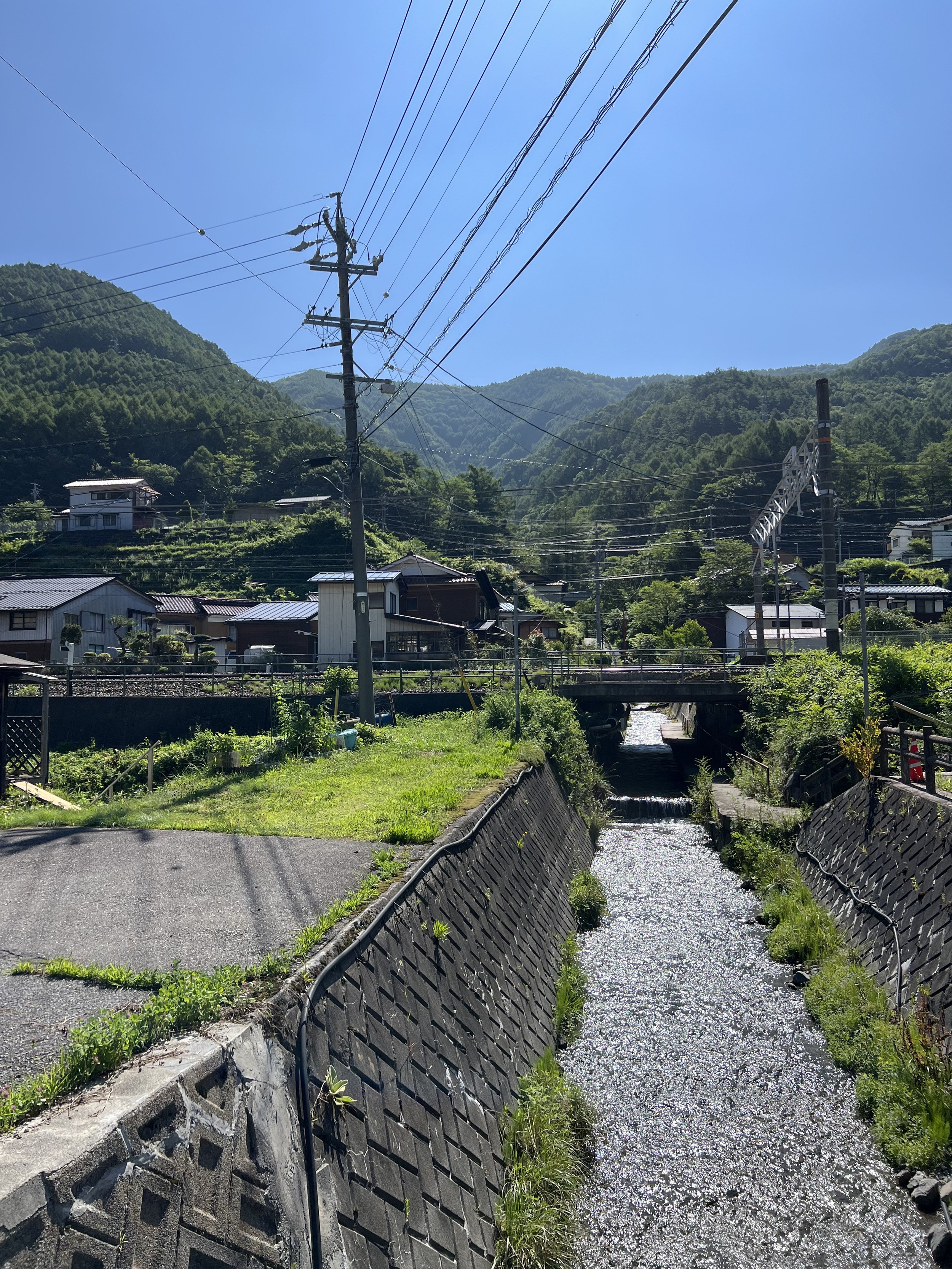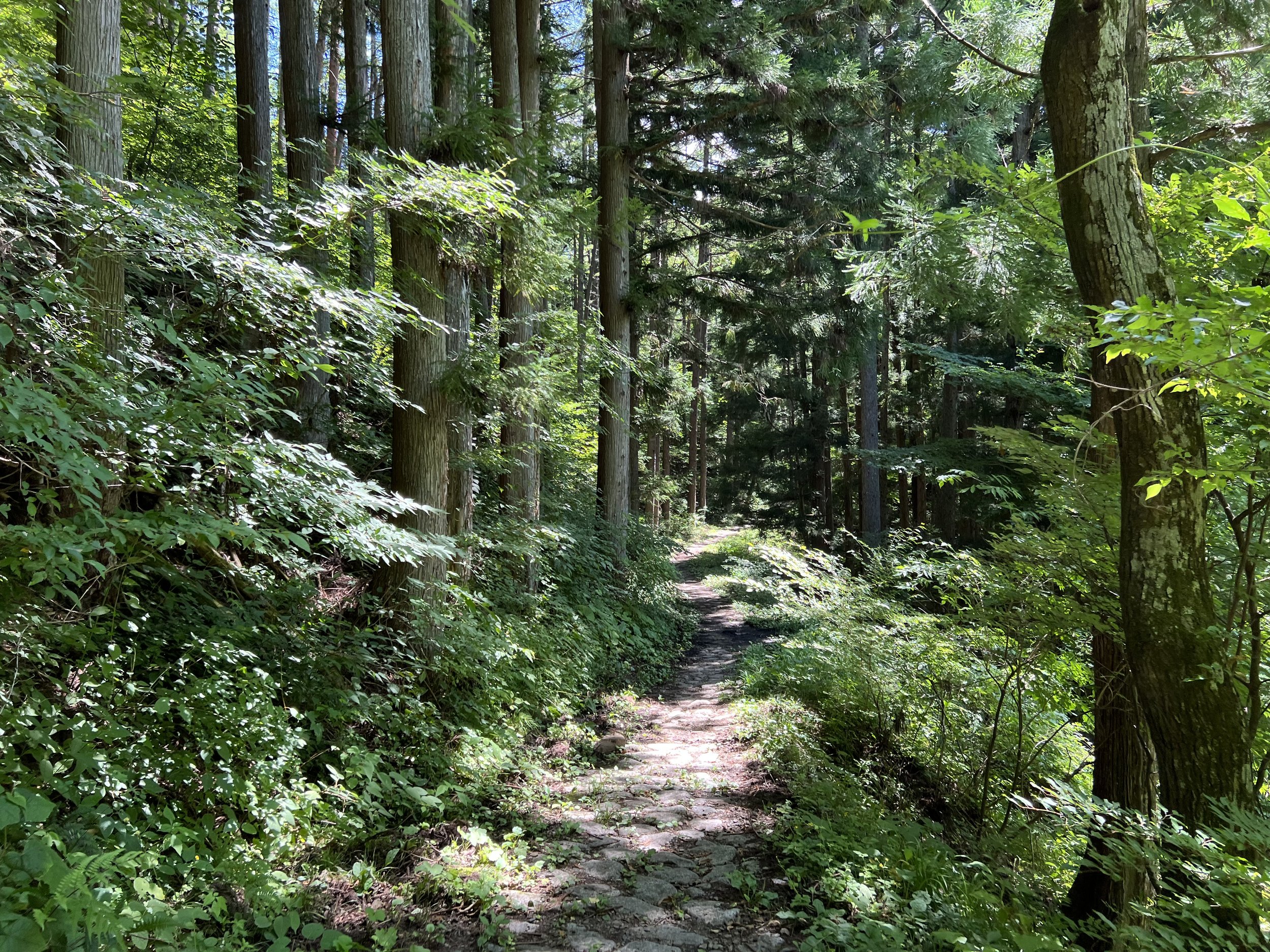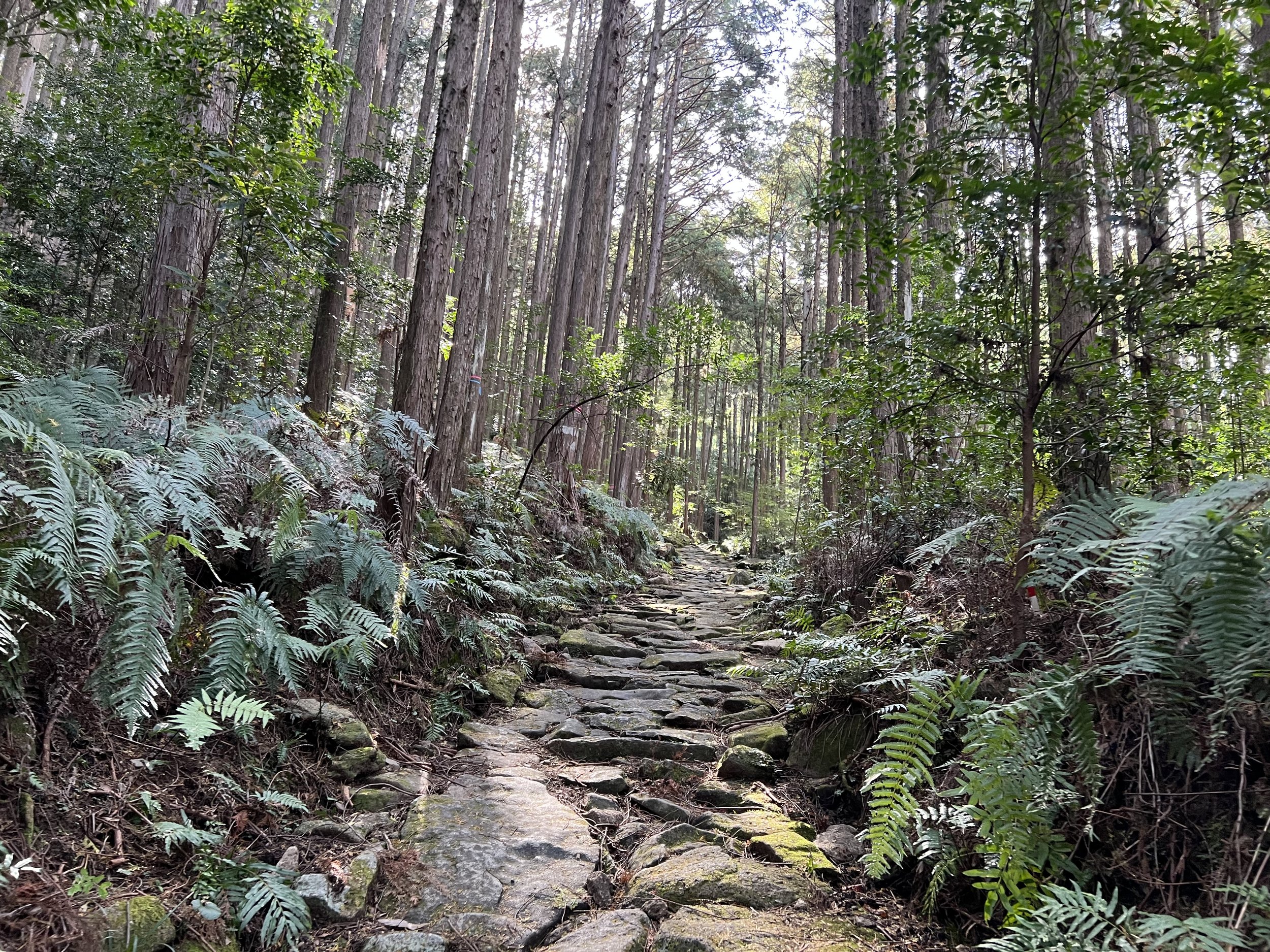Nakasendo Torii Pass - A Rewarding Hike From Yabuhara to Narai
Japan is full of magnificent hiking trails. During the summer 2023, I had a great time hiking the Torii Pass (also known as Torii Toge 鳥居峠 ) connecting Yabuhara (藪原) and Narai(奈良井), one of the most challenging sections of the ancient Nakasendo trail. Less well known than the Magome-Tsumago section of the Nakasendo, it is nonetheless a beautiful and enjoyable half-day walk, perfect for appreciating off-the-beaten-path Japan while getting some exercise on a quiet hiking trail.
What is the Nakasendo?
The ancient Nakasendo trail (中山道, meaning “middle mountain road”) was a 540-kilometre road that once connected Kyoto and Edo (Tokyo today) during the Edo period (1603-1867). Hiking parts of the Nakasendo is a way to step back in time and get a glimpse of Japan in the Edo period, as some sections, as well as some of the old post towns where samurai and other travellers rested during their long journeys, are still well preserved today. In particular, visiting and hiking the historic towns of Narai, Tsumago (妻籠) and Magome (馬籠), located in the Kiso Valley (木曽谷) are, in my opinion, some of the best ways to experience traditional and rural Japan.
About the Yabuhara-Narai Trail
The trail connecting Yabuhara and Narai goes through the Torii pass, the highest point on the Nakasendo, located at 1,197 m. The hike is 8.5km long (6km if you do not count the walk in the two towns) and takes about 3 hours. While the incline from Yabuhara to the top of the Tori Pass is steep, the path down to Narai is gentler. Although the first part of the hike is physical, I still think it is accessible to everyone as long as you adapt your pace to your physical abilities.
The hike is not as well known as the Magome-Tsumago section of the Nakasendo (which I will come back to in a later article). During my summer visit in early August 2023, I was the only foreigner doing the hike, and I only met two groups of Japanese hikers (no more than 5 people in total). Most people prefer to stop directly at Narai and only visit the post town, which is also an option if you are short of time or don’t like hiking.
But if you are curious to know more about this hike, then keep on reading!
How to get to Yabuhara?
Yabuhara is a quiet little town nestling in the Kiso Valley. The easiest way to access Yabuhara is from Matsumoto or Nagoya.
From Matsumoto, you can either take a direct train on the Shinonoi line (taking 50 minutes and costing ¥770) or change at Shioriji station for a local train on the Chuo line. Trains are infrequent, so you should plan your journey in advance and check the train timetables (in my case, I usually use Google Maps). You should also be aware that you probably won’t be able to pay with your IC card, as the stations in the Kiso valley are not equipped for this (at least that was the case when I visited during the summer 2023). So it’s best to buy a ticket at your departure station to avoid any problems.
From Nagoya, the journey takes between 2 and 3 hours to Yabuhara and the price varies depending on whether you take an express train or not and may require a transfer. You may decide to stop off en route to visit Magome and Tsumago and spend a night in the area between Nakatsugawa and Nagiso stations. From Nagiso station, it takes around 1 hour to reach Yabuhara by local train on the Chuo line.
In my case, I was staying in the Nagano prefecture for a week by a magnificent lake called Suwa-ko (a hidden gem in Japan, I can’t wait to write about this beautiful place) and travelled from there.
Hike the Yabuhara-Narai Trail with Me
Arrive at Yabuhara Station and Explore the Town until the Start of the Trail
As soon as you leave the station, you will see a large sign for the Nakasendo trail on your left. There are signs across Yabuhara, in both Japanese and English, to guide hikers. As you follow them, you can take a look around in the streets of Yabuhara, where you'll find some beautiful old houses.
Yabuhara station
Yabuhara
Following the signs, at some point, you will go through a train track underpass. Before heading left, you should take a small detour to the right and visit the local shrine, Yabuhara Jinja (藪原神社), and Gokurakuji Temple (極楽寺). I was alone when I visited Yabuhara Jinja and enjoyed the peace and serenity of this place.
Yabuhara Jinja
Back on the old Nakasendo road towards the Torii Pass trail, simply follow the signs in the town into the forest. You will pass by a few historic monuments, an old water fountain that was used by travelers on their way to the Torii Pass, a small shrine (天降社) and public toilets (木曽の鳥居峠公衆トイレ).
原町清水
天降社
You will soon reach the start of the forest track that marks the beginning of the Nakasendo Torii Toge hiking trail.
Get Ready for Some Exercise on the Way Up
It's time to sweat (if it was not already the case)! The ancient stone-path will lead you up the mountain into the dense forest, passing by a few small stone monuments here and there. And I appreciated the regular signposts with directions in Japanese and English, so it was easy to follow the trail.
The path winds through the mountain and you can soon enjoy a nice view of Yabuhara from an observatory as a reward for all these efforts.
View of Yabuhara
Rest in Maruyama Park and visit the Toriitoge Ontake Shrine
You will soon reach Maruyama Park, where you can find a few stone monuments including a haiku monument of Basho Matsuo, a famous poet of the Edo period, and a bit further on, the washbasin of the Ontake shrine.
Maruyama park
Ontake shrine’s washbasin
Indeed, the next point of interest is the Ontake shrine (御嶽神社), with its Buddha stone statues and its white Torii gate. Near the shrine, a sign points to a spot where, on a clear day, Mount Ontake, the object of worship at this shrine, can be seen in the distance. The area around the shrine is very peaceful and an ideal place to take a break and relax.
Ontake Shrine
Ontake shrine’s torii gate
Hike Down to Narai
Good news, the hardest part of the hike is behind you! From here, you will first walk for 10-15 minutes on flat ground passing by a number of large chestnut trees. One of them is the subject of a legend called “Koumi-no-Tochi” (Child in the Tree Hollow). According to this legend, a villager who had no children found a baby abandoned in the hollow of the tree, rescued and adopted him. It is said that anyone who drinks tea made from this tree bark will be blessed with a child.
As you follow the signs that guide you towards Narai and start your descent, you will pass by a monument dedicated to the Emperor Meiji’s visit, two rest houses, bridges and an observatory. As I walked that section of the hike, I remember the birds singing and I think I saw from afar a few monkeys fleeing as I passed by.
After a while, you will come out of the forest onto a tarmac road. On your left, you will see a red shrine called Shizume Jinja (鎮神社), welcoming you as you arrive to the southern end of Narai.
Shizume Shrine
Enjoy your Well-Deserved Reward by Visiting Narai at Your Own Pace
Narai, also called Narai-juku and once known as “Narai of a thousand houses” as the most prosperous post town along the Nakasendo, is a beautiful traditional village to explore at leisure. The kilometre-long main street is nowadays filled with small restaurants and cafés, souvenir shops and guesthouses. The small town also boasts a number of historical monuments, as well as small museums, shrines and temples. You can certainly spend 2-3 hours to exploring the town freely and soaking up the traditional atmosphere.
Note that the station is located at the northern end of the main street. Trains stopping at Narai are not frequent. So be sure to check the train timetable in advance to plan your onward journey, otherwise you may have to wait 1 or 2 hours.
Hiking Tips to Know Before Doing the Yabuhara-Narai Trail
As mentioned previously in this article, the first part of the hike is quite physical, which you should keep in mind if you are not an experienced hiker and prepare youself accordingly.
Good shoes, water and snacks are needed for a safe and stress-free hike.
Be aware of the possible presence of bears. Bells are placed along the trail so that hikers can ring them to warn bears of their presence. Be sure to ring them to avoid any unfortunate encounters.
Once you start the hike in the forest, there are no toilets. So if needed, be sure to use the public toilet (indicated on Google maps as follow 木曽の鳥居峠公衆トイレ) on your way from Yabuhara to the start of the Torii Pass hike.
Plan your train travel in advance, as trains passing through the Kiso Valley are not very frequent.
When to go? This hike is accessible all year round. I enjoyed hiking in the summer because of the lush green forest. Because it is a mountain hike, although it was quite humid, the temperature was still reasonable (around 30 degrees celsius). Autumn also seems to be an ideal time to do this hike to admire the beautiful autumn foliage in a peaceful setting.
To Conclude
I hope you found some useful information in this article. Personally, I really enjoyed this walk. If you're looking for a quiet hike off the beaten track, you should like the Yabuhara-Narai section of the Nakasendo!
I'd also highly recommend doing the more popular but very beautiful hike from Magome to Tsumago, which I’ve written about in my article “A Hiking Guide to the Magome-Tsumago Nakasendo Trail”. Although I have to admit that the scenery is more stunning than that of the Yabuhara-Narai section, it is also much more busy.
With all that in mind, will you add the Nakasendo to your Japan bucket list?
Found this article helpful? Buy me a coffee. 😊
Want to stay in touch? Subscribe to my monthly newsletter (with latest articles, updates, travel tips and more...) delivered straight to your inbox. 📩































